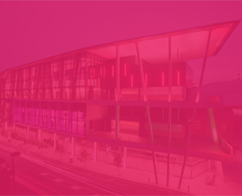
It seems like Sonic the Hedgehog think-pieces throughout the history of gaming are synonymous with low-hanging, crowd-pleasing, ‘3D Sonic = bad’ takes. And we’re not saying they’re wrong; the Adventure games are not great, and Sonic Forces was a huge disappointment, only exacerbated by the fact that it released shortly after the incredible Sonic Mania. But if you cast your mind back, there was a time when Sonic had some good games in 3D. Really good games. Allow us to play defense-attorney once again for some great games suffering from the Mandela Effect, in that the internet group-memory may have convinced you that they aren’t actually amazing.
If the original Genesis-era games, Sonic 1, 2, and 3 (& Knuckles) represent the pinnacle of the blue blur in 2D, then Sonic Unleashed, Colours, and Generations are the modern equivalents, and you can throw Lost World in there in if you like, but only parts of it. These games perfected the Modern Sonic formula in 3D, and all they had to do was the exact same thing Classic Sonic did, but put the camera behind him. That’s the entire formula for success.
What makes Sonic fun is the momentum-based platforming; if you’re good, then theoretically you should never need to stop going fast, because you’ll be timing your jumps and managing your speed to circumvent the traps that make you lose fastness, and that’s true of 2D and 3D Sonic. You see an object coming that’ll stop you… You jump, hell yeah.
Now, great Sonic stages are divided into several different paths that connect and diverge in different spots, with the quickest, most difficult path normally being high up, and the slowest, easiest path being closest to the ground. 3D Sonic follows all these same design principles except the folks at SEGA added even more movement! You can move left and right now (whoa crazy), meaning that well-designed levels now have even more paths for the player to choose from, but you know all this.
We’re trying to tell you why these three Sonic games are better than your favourite Sonic games… that’s because, starting with Unleashed, Sonic Team smartly improved on Adventure’s 3D gameplay by not having Sonic careen across the screen like an amateur ice-skater, because they added Quick-Step Lanes instead. In these sections, Sonic only goes one direction, forward, and his horizontal movement is controlled by the bumpers. This is how Sonic was supposed to play in 3D, a straight shot to the finish line, weaving through Badniks and obstacles with frame-perfect timing, not wide-open spaces with puzzle-solving and janky combat; lookin’ at you Adventure 1 and 2. Nobody wants to play as Tails, or Eggman, or Rouge the Bat, or, god forbid, Big the Cat, to beat the entire game. If you’re playing a Sonic game, you’re supposed to be running fast, not plodding along in a mecha with cement bricks for feet, or flying around finding randomised treasure. And yes, in the interest of being fair, this also extends to the Werehog in Unleashed too. Perhaps the best modern Sonic game, is only 50% playable, thanks to half of it being an uninspired God of War clone… But Colours and Generations fixed that by cutting the fluff, so ultimately it’s a net positive.
Modern Sonic also adds Boosting into the mix, which adds an entirely new level of depth to the gameplay with the meter management. Unlike the ol’ reliable Spin Dash, Boosting consumes a meter that gets refilled by destroying enemies, doing mid-air tricks, or collecting Rings, all three of which are fun risk vs reward moments, the cornerstone of great Sonic gameplay! You have to pick your moments of when to just go full-pelt with your Boost, or conserve it for a moment when you really need the acceleration. Learning the stages back-to-front and memorising where you can use your Boost is really its own reward.
You know what else 3D Sonic has that 2D doesn’t? Buttrock. That’s right, the corny dad-rock vocal tracks, throw that chiptune, 8-bit, old-school music in the TRASH, now we roll to Live & Learn, Knight of the Wind, All Hail Shadow, and other equally edgy songs you’ve probably forgotten about. I mean, look at some of these lyrics:
Suffer long and it will set you free
Only through trial do we
Find the strength we need
It’s never over, just another day
All hope and tragedies
And everything that comes our way
You old-school fans can have your Studiopolis or Flying Battery themes, I’ve got:
I see and feel the evil
My hands will crush ’em all
You think you have the answers
I’ll laugh and watch you fall
Is this Sonic the Hedgehog, or Doom Eternal? And yes, both of those lyrics are from Shadow’s themes, obviously. Are they awful and cheesy as hell? Absolutely! Do they SLAP though? Do they go hard? They most certainly do.
Also, Lost World gave us wall-running but to be honest, most of that game is questionable so let’s not mention it anymore.
The last thing we’d like to mention is the advanced speed-running tech present in the Boost games, specifically Unleashed and Generations, because what’s better than going fast, going faster of course! The amount of weird techniques is so cool, and learning even the basic stuff makes the game so much more fun. For example, when Sonic transitions from 3D sections to 2D sections, he loses some speed, but if you’re doing a Slide (another good modern mechanic) when you’re in the transition, you don’t lose any speed!
There’s more though; Drifting in this game can make you go faster if you do it at a perfect angle, but you can’t Drift in Quick-Step Lanes, unless you go into a Drift before you enter the Lane! Then, if you’re good enough at maintaining the Drift and avoiding obstacles at the same time, you can get a huge speed increase! If you Drift right before you leave a ramp, you gain way more air than you’re supposed to and can use it to skip massive chunks of a stage, and, this is the last thing, you can take advantage of all of this while using M-Speed and D-Speed (This is a very helpful tutorial). It’s basically abusing a very precise glitch to go way faster than you’re meant to, and it looks sick. Once you learn all these things, playing these titles becomes less about working within the game’s limits to go fast, and turns into, “How can I keep breaking the game enough to go even faster?”
With all that in mind, the new mechanics, the cheesy songs, and the advanced speed-running tech, I hope it’s become clear why 3D Sonic games are definitely worth playing!








